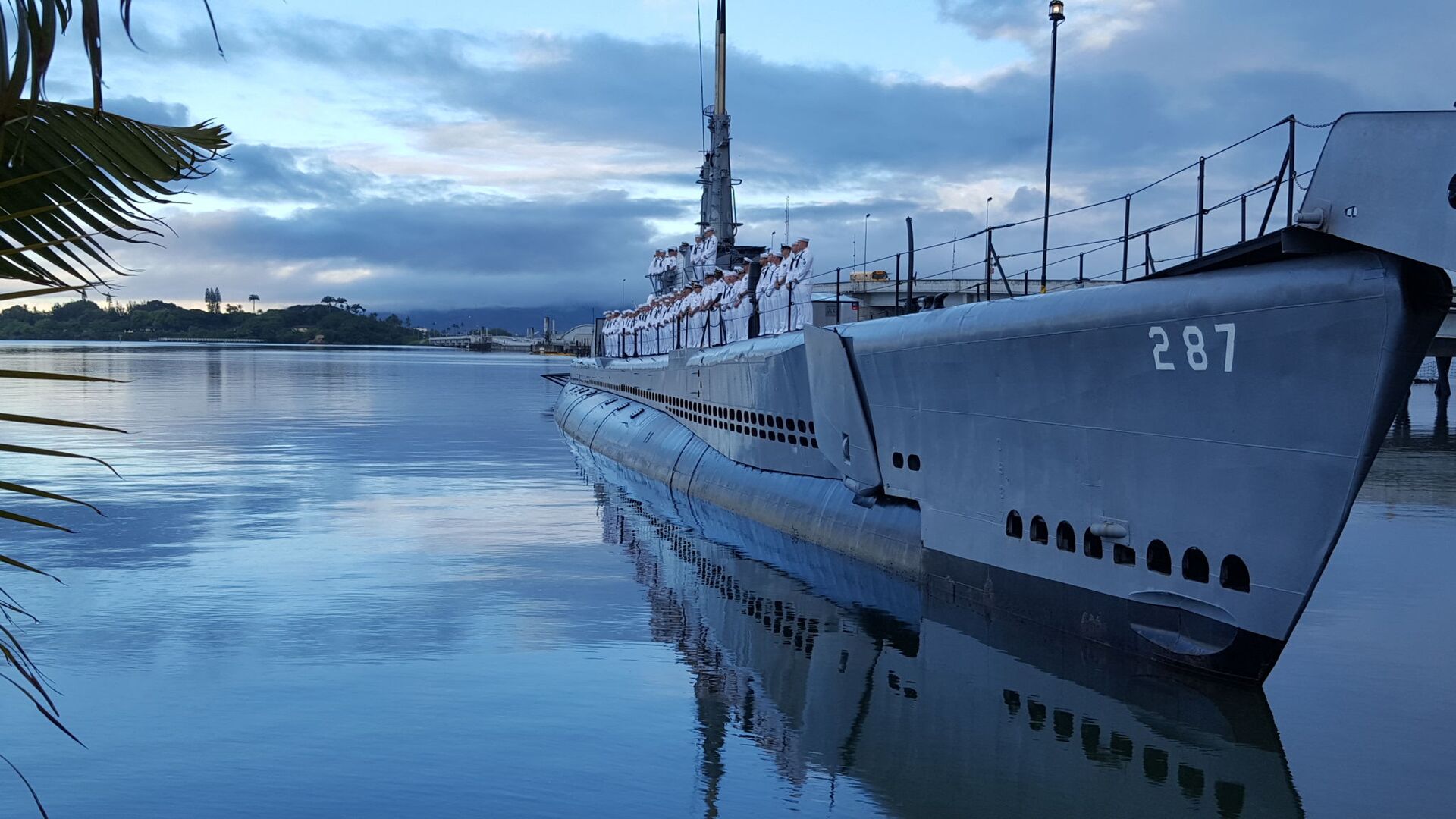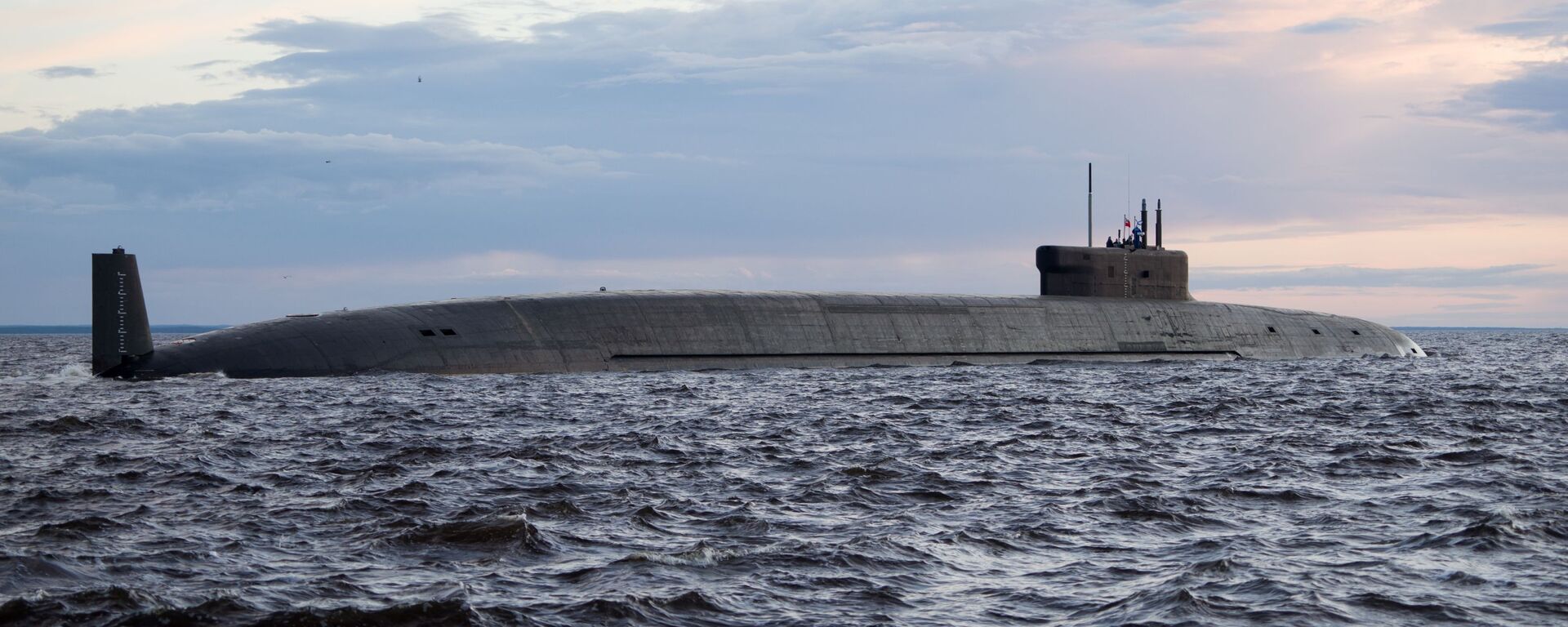US Navy's Secret Nuclear Submarine Will Be 'Apex Predator' Operating Behind Enemy Lines - Report
22:33 GMT 23.07.2021 (Updated: 09:37 GMT 20.06.2023)

© Wikipedia / U.S. Navy illustration
Subscribe
Director of the Undersea Warfare Division within the US Navy Bill Houston reportedly expected that the end result will be a new class of hunter-killer that is "going to be faster, carry a significant punch, bigger payload, larger salvo rate; it’s going to have acoustic superiority".
The US Navy's top-secret future nuclear attack submarine project, or SSN(X) is expected to combine the best fighting qualities of its predecessors and serve as the "ultimate apex predator", Defense News reported, citing top officials.
During a panel discussion as part of the Navy League's Sea Air Space 2021 event, Rear Admiral Houston discussed his ambitions for the new hunter-killer submarine.
"We are looking at the ultimate apex predator for the maritime domain," he is quoted in the report as saying. "And simultaneously, we’re going to work on operational availability with respect to maintenance. [...] What are we doing, we’re taking what we already know how to do and combining it together."
The next-generation attack submarine, according to Houston, should combine the payload and speed of the Seawolf-class with the acoustics and sensors of the Virginia class. The new design is reportedly expected to succeed in two SSN classes, the other being the Cold War-era Los Angeles class.
Moreover, the operational availability and service life of the Columbia-class, the Navy's highly expensive next-generation ballistic missile submarine (SSBN), should also reportedly be factored into SSN(X).

The crew of the Virginia-class fast attack submarine USS Hawaii (SSN 776) man the rails aboard WWII museum ship USS Bowfin (SS 287) to shoot a spirit spot for Fox Sports to commemorate the 75th anniversary of the attack on Pearl Harbor.
CC BY 2.0 / Flickr / Cmdr. Corey Barker /
According to Houston, during the Cold War, the Seawolf-class attack submarine was constructed with the speed and firepower to travel into enemy territory and hunt submarines. The Virginia class was designed after the Cold War to provide the stealth and sensors needed to perform land-attack missions or covert operations in shallow seas near shorelines.
With a nuclear reactor that will last the life of the boat rather than requiring a prolonged refuelling mid-life, the currently developed Columbia SSBN will reduce lifecycle maintenance time and cost.
And Houston reportedly stated that the Navy is "going to go ahead and put that all together", expressing his confidence in the project's success since "we’ve already built that on those previous platforms".
"That is going to be what I’m going to call SSN(X), the apex predator, because it really needs to be ready for that major combat operations, it’s going to need to be able to go behind enemy lines and deliver that punch. That is going to really, really establish our primacy," the rear admiral noted.
Newest Technologies for the Hunter-Killer Sub of the Future
However, according to the Drive's report on the new submarine, it is likely that the Navy is exploring putting some next-generation technologies into the SSN(X), such as an inflatable sail to improve speed, maneuverability, and acoustic stealth, for example.
As already known, the SSN(X) would use technology developed for the Columbia class, and it would be likely wider than the Virginia class as well. Moreover, it is quite expected that there may be room for more spin-offs from the Columbia concept, with a conventionally armed, multi-purpose "Large Payload Submarine" employing the same hull form, reportedly being considered.
According to a 2018 report from the Congressional Budget Office, the SSN(X) design could carry up to 62 torpedoes or other torpedo tube-launched weapons, such as anti-ship missiles like the UGM-84 Harpoon and future anti-ship missiles, and could turn down the vertical launch capability entirely.

Sailors assigned to the Los Angeles-class fast-attack submarine USS Columbia (SSN 771) load a Mark 48 advanced capability torpedo for Exercise Agile Dagger 2021.
The Navy will also have to pay for the underwater drones that Rear Adm. Houston believes will work alongside future SSNs. Attack submarines would manage small and medium unmanned underwater boats (UUVs), while bigger UUVs would be controlled from shore sites, the navy official suggested.
According to the Drive, aside from ensuring a qualitative edge in underwater warfare, the SSN(X) is critical to the Navy's efforts to expand its attack submarine fleet from the current 50 boats in service to the 70 expected under the Battle Force 2045 plan.
To reach that goal, the Navy will have to not only build new submarines, but also retain existing submarines in operation for longer than expected, requiring potentially costly refits and modifications.
The Navy has requested $98 million in research and development money for SSN(X) in its planned Fiscal Year 2022 budget, however acquisition of two boats per year is not expected until Fiscal Year 2034, while each boat is expected to cost between $5.8 and $6.2 billion, according to the Congressional Budget Office.
Even after accounting for inflation, that represents a significant increase over the Virginia class, which cost roughly $3.45 billion with the increased payload module and $2.8 billion without, according to the US Naval Institute's analysis.

